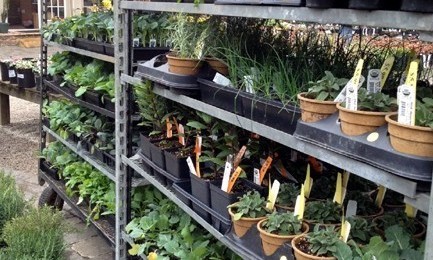March is here and spring is around the corner, and if you are anything like me, then you are longing for some flowers and dreaming of spring planting. Although it's still a bit early for many plants, now is definitely the time to be planting cool-season vegetables in your edible gardens. Cool-season veggies grow best at temperatures averaging 15° cooler than those needed by warm season types. Many have edible leaves or roots (lettuce, spinach, carrots, and radishes); others (artichokes, broccoli, cauliflower) are grown for their immature flowers. A few (peas, broad beans) produce edible seeds. Most can endure short periods of frost.
For best results, you need to grow them to maturity in cool weather; otherwise, they can turn bitter tasting, or bolt to seed rather than producing edible parts. Except in coldest climates, plant them in very early spring so the crop will mature before summer heat settles in, or in late summer for a crop in fall in winter.
Here's a few tips for successful cool-season vegetable gardening this month.
Indoor Transplants
If you started transplants indoor from seed, you will need to harden these home-grown transplants before moving them into the garden. Hardening is a procedure that prepares indoor-grown plants for the rigors of the outdoors. Reduce watering and set them outdoors during the day. Bring them inside at night. Continue this for 3-4 days. If the temperature drops below 50 degrees Fahrenheit, take the plants inside. After four days, allow the plants to be outside all day and night. After about a week or two, the plants should be hardened off and ready to be transplanted with a minimum of shock.
Helpful Hint- Rotate Your Garden
Rotate your vegetables by not planting the same vegetable or related vegetable in the same location year after year. Rotate at least once every three years. If you have to, and if space permits, rotate the entire garden to a new location and allow the original garden to remain fallow for a year. By rotating vegetables from different families you can prevent the buildup of insect and disease problems. Refer to the following list of vegetable families when rotating your garden.
Carrot Family: carrot, chervil, celery, coriander, dill, Florence fennel, parsley, and parsnip
Goosefoot Family: beet, spinach, and Swiss chard
Gourd Family: cucumber, gourd, cantaloupe, watermelon, pumpkin, and squash
Grass Family: popcorn and sweet corn
Lily Family: asparagus
Mallow Family: okra
Mustard Family: bok choi, broccoli, Brussels sprouts, cabbage, Chinese cabbage, cauliflower, collards, cress, kale, horseradish, holrabi, mustard greens, radish, rutabaga, and turnip
Nightshade Family: eggplant, pepper, Irish potato, and tomato
Onion Family: chive, garlic, leek, onion, and shallot
Pea Family: beans and peas
Sunflower Family: endive, chicory, globe artichoke, Jerusalem artichoke, lettuce, salsify, and sunflower
Potatoes
Piedmont gardeners can buy seed potatoes and cut them into egg-sized pieces containing one or two eyes. Allow the cuts to dry and callous for a day or two before planting. Plant them when the soil temperature remains above 50 degrees F.
Asparagus
Plant asparagus crowns before new growth emerges from the buds.
Fertilizing
Some vegetables have heavier demands for nitrogen than others and need extra nitrogen during the growing season. These heavy-feeders benefit from an application of primarily a nitrogen-containing fertilizer applied along one side of the row, about 4-6 inches from the plants. This is called sidedressing. Use a nitrogen fertilizer, such as calcium nitrate, bloodmeal, or cotton seed meal.
Sidedress beets and carrots four to six weeks after planting. Broccoli, cabbage, and cauliflower benefit from an application two to three weeks after planting, and again four to six weeks later. Sidedress lettuce soon after the seedlings emerge and grow. Fertilize English peas when they are 4 to 6 inches tall.
Herbs
Plant perennial herbs such as chives, oregano, and thyme as they become available. Also dill and parsley are okay to sow or set out at this time.
Warm-Season Vegetables
For those of you wishing to get a jump start on your warm-season vegetable gardens, try sowing warm-season vegetable seeds indoors for transplant outdoors later. In flats or trays, try eggplant, New Zealand spinach ( a heat-tolerant substitute for spinach), pepper, and tomato. Tender-rooted vegetables such as cucumber, muskmelon, summer squash, and watermelon should be sown in individual pots or peat pellets.
For more gardening tips, be sure to visit the garden center. Our friendly staff is on-hand seven days a week with answers to all your gardening needs.



